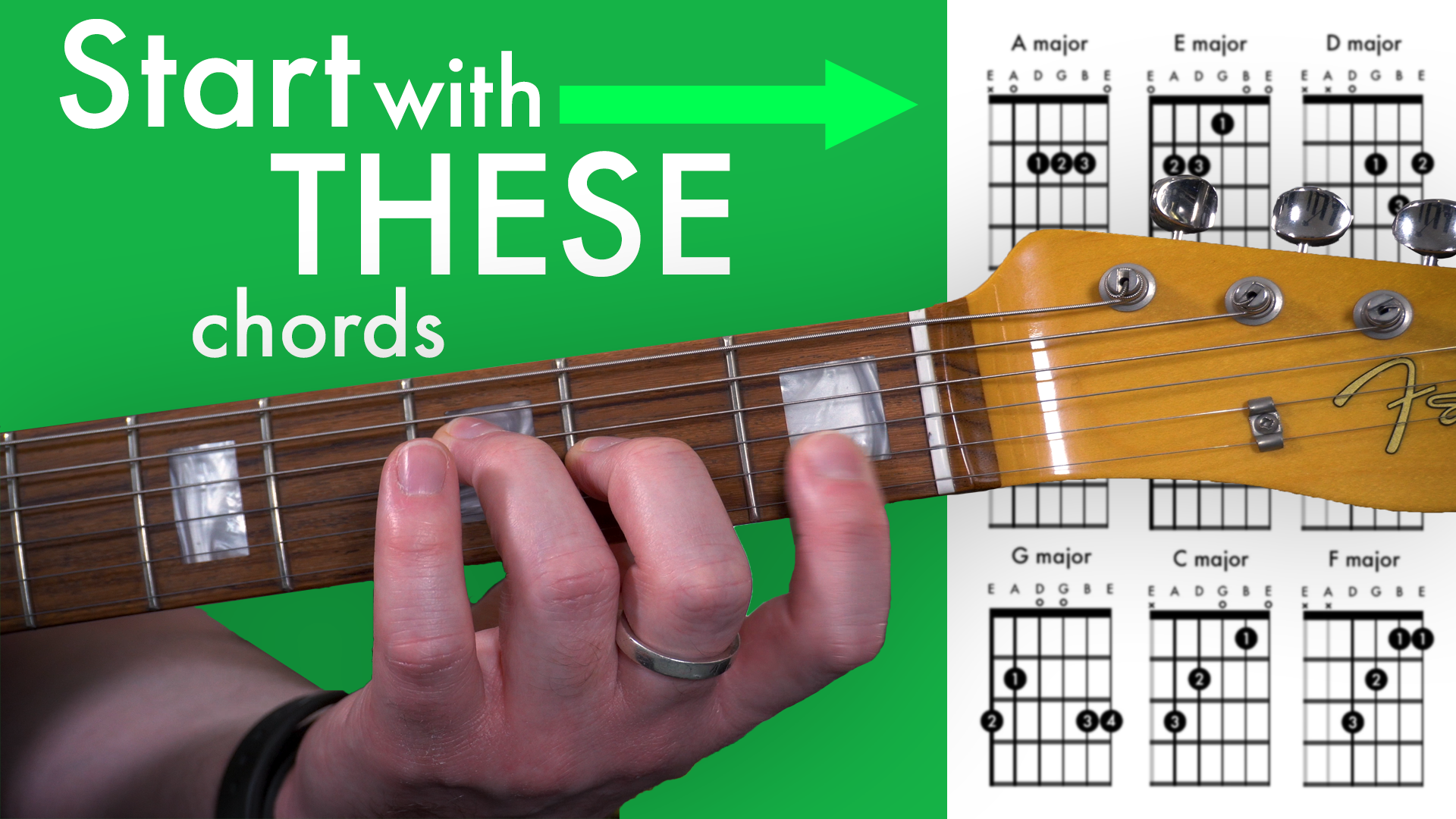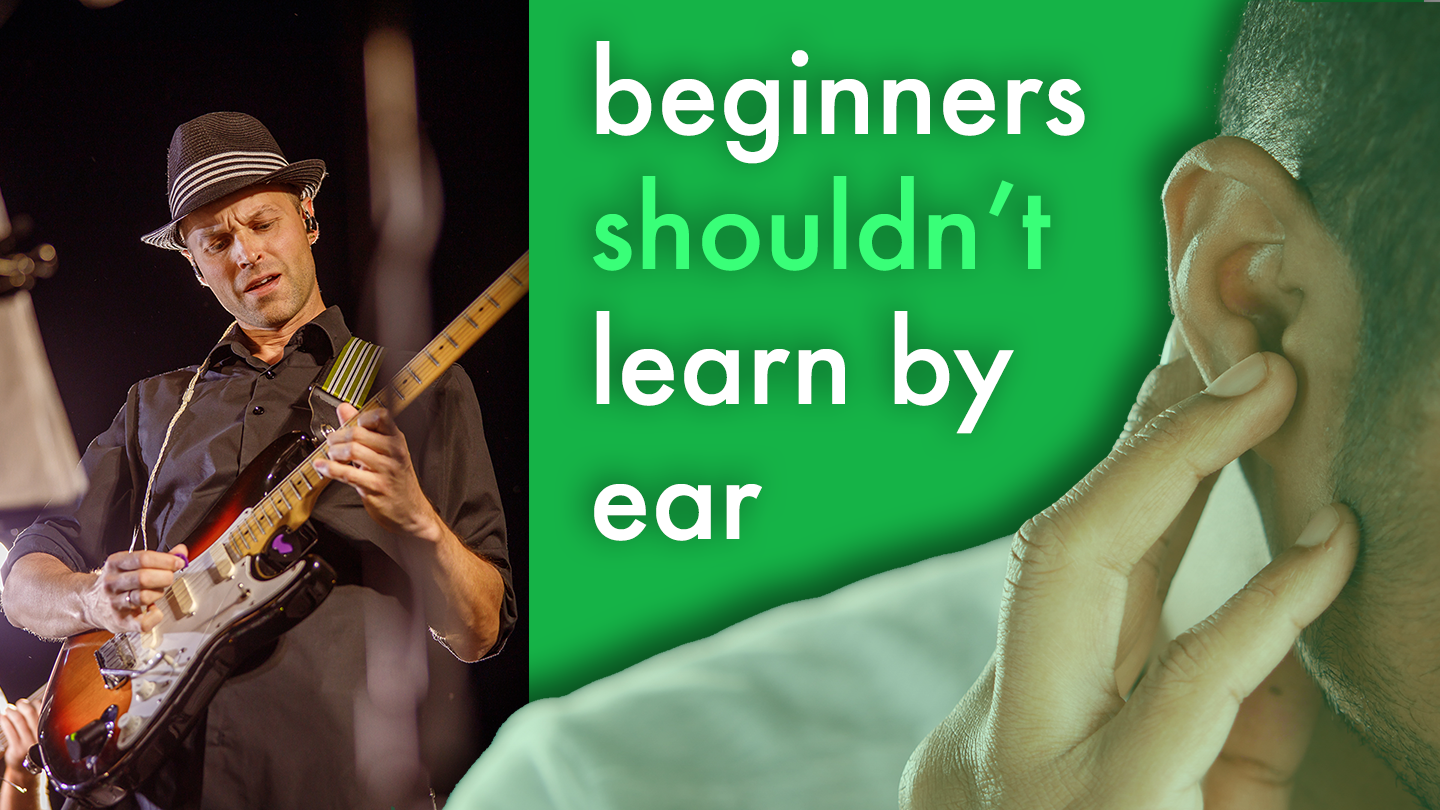How to strum
Beginner Guitar Essentials Lesson 5
This series of lessons will set you up for success on the guitar. You’ll learn what to focus on as a beginner, what to ignore, and how to structure your practice so you can start using what you’re learning to play songs as quickly as possible!
How to strum
Rhythm is one of the most important skills you can develop as a guitar player.
When you strum, make sure you are moving from your elbow. The wrist shouldn’t move at all. Rather, the wrist is there to cushion the impact of hitting the strings in order to provide a smoother motion. Just like suspension on a car.
Constant motion is an important concept to keep in mind as you’re learning to strum. Think about how a pendulum behaves; constant, consistent movement back and forth. We never want to break our motion when we are strumming.
Another important thing to remember is to keep the strings in the middle of the movement. If you move your arm further on one side of the strings than the other then it will start to sound like you’re galloping. It’s important that the motion of your arm extends equal distances on both sides of the strings in order to maintain a consistent rhythm.
Strumming on the beat
The more movement you can incorporate while you’re learning to strum the better!
Make sure you are tapping your foot and counting out loud. But, nodding your head and really feeling the beat can be even more helpful.
Strumming on the off-beat
Once you have gotten used to the general motion of the strum, you can add the up-strums to your pattern.
You’ll find this will be harder than just doing down-strums. It will really show if we have been keeping the strings in the middle of our motion.
Counting out loud is really important. The physical movement we do when we strum helps develop our physical understanding. Foot-tapping helps us learn what it feels like to strum on a certain beat. This is important because you might find yourself trying to learn a song with a rhythm that’s too quick to figure out by listening and trying to count. But if you’re able to listen to the rhythm and recognise what it feels like, you’ll be able to figure out the pattern without any trouble at all.
Counting out loud helps connect your intellectual understanding with the physical understanding you are developing by tapping your foot. Don’t just do it in your head! It might not seem like it matters, but trust me; it makes a big difference. Counting in your head is less tangible than counting out loud. Do you know how you can think a million thoughts a second? It’s far harder to perceive exactly where a thought is lining up than a sound you can actually hear. When you count out loud, you’ll find it easier to notice if things are happening at the same time. It will also incorporate your aural understanding as you continue to strengthen and integrate your physical and intellectual understandings.
Enjoying the lessons?
This series of lessons is test footage from the first part of our upcoming beginner guitar course. These lessons are all from the first of 10 sections that will help you form a rock-solid foundation when you’re starting out as a beginner guitar player.
If you’ve got any feedback on the material, please leave a comment. I’d love to hear what you think!
And, if you want to be one of the first to hear when the new course drops, make sure you’re signed up for the Guitar Nutrition newsletter.
In the next part of this lesson series, we’ll go over how to practice the guitar effectively.



A guitarist who has learned all the notes on the fretboard: Can more effectively learn scales and chords; Has a better understanding of keys, intervals, and scale degrees; Is able to more easily memorise songs; Has a greater capacity to understand music theory; Is more effectively able to develop their aural skills; Gets ‘lost’ far less frequently when they are improvising on the guitar.